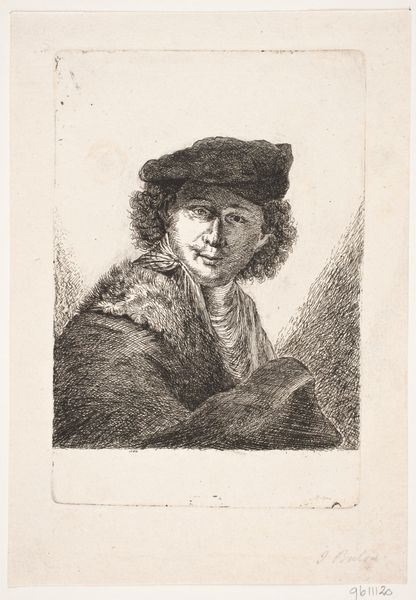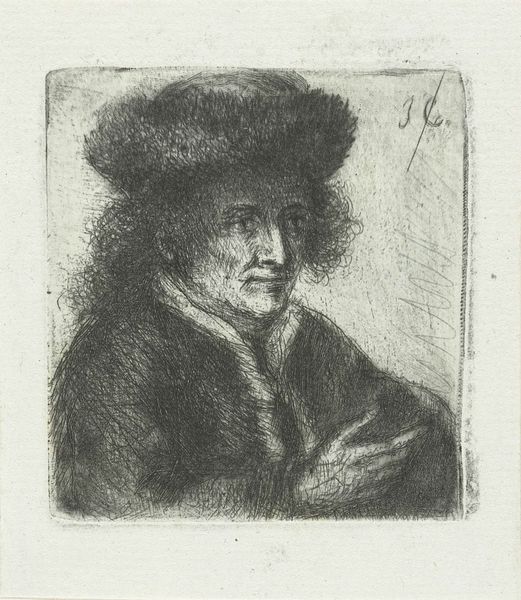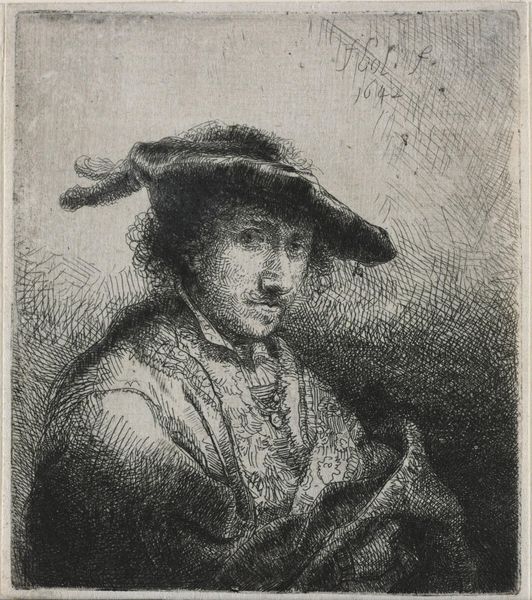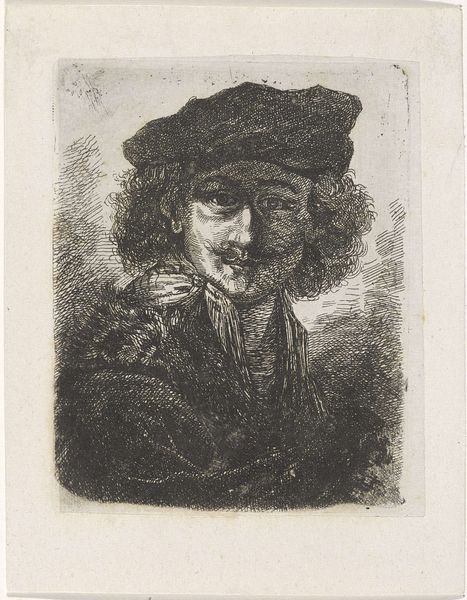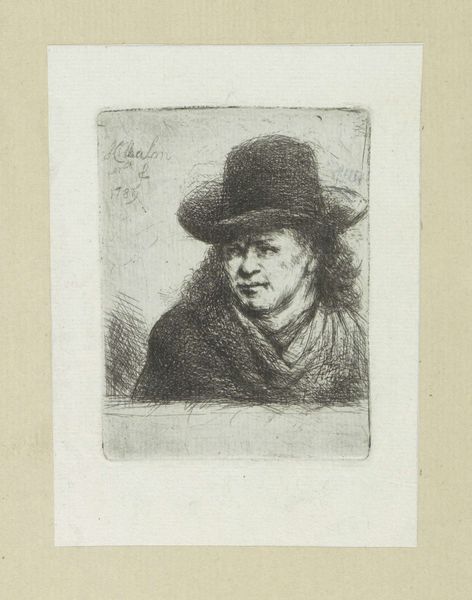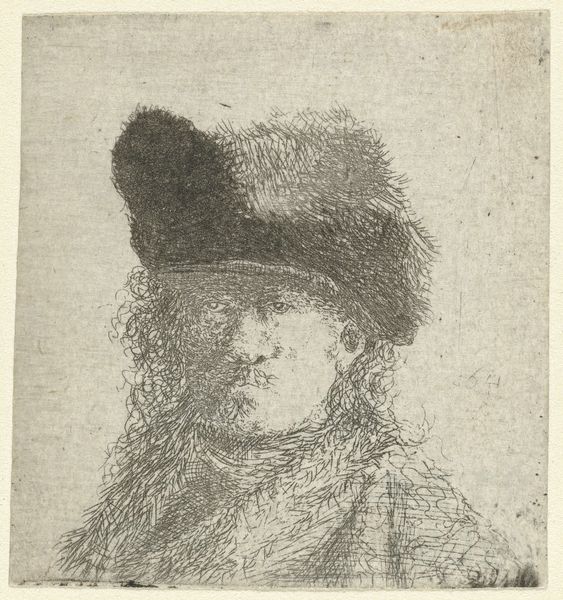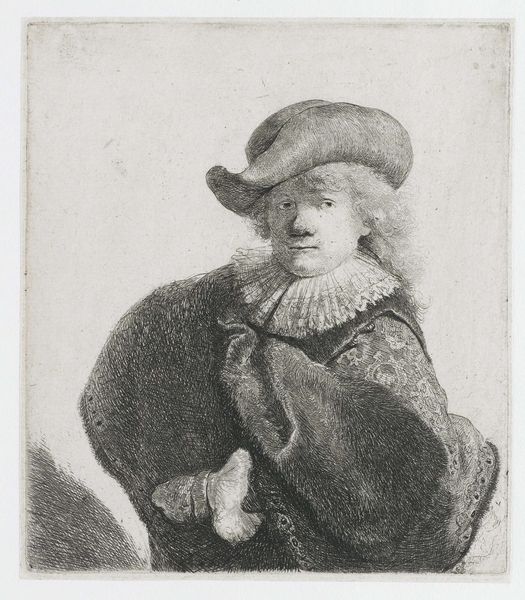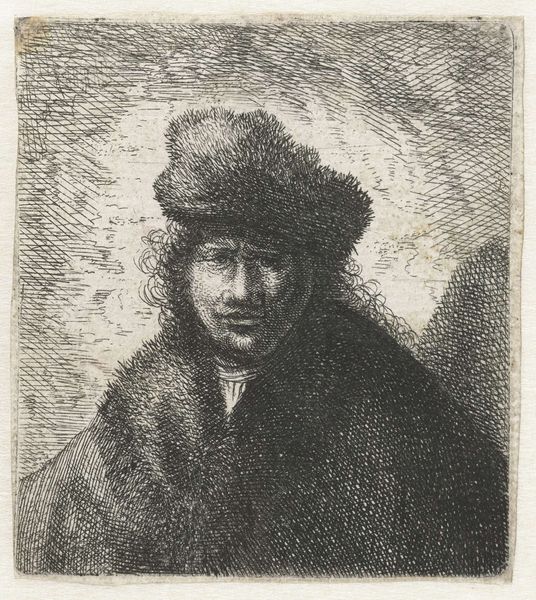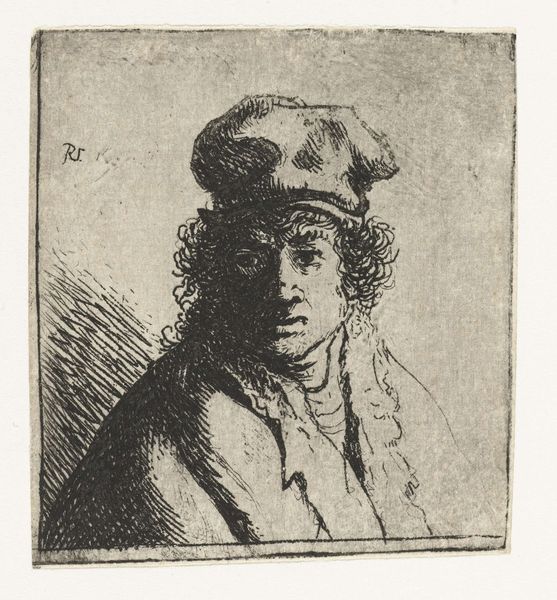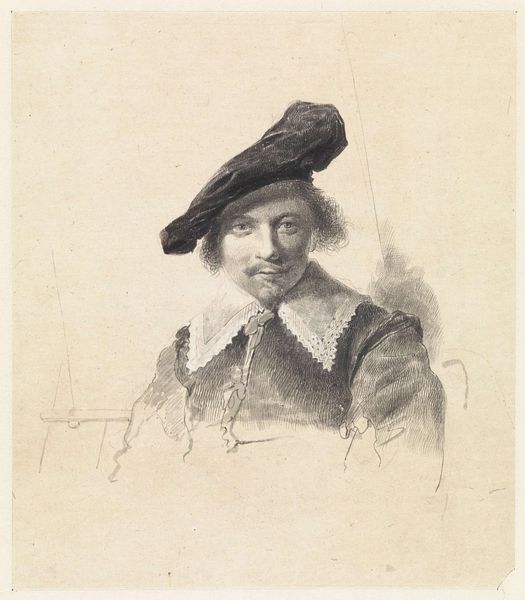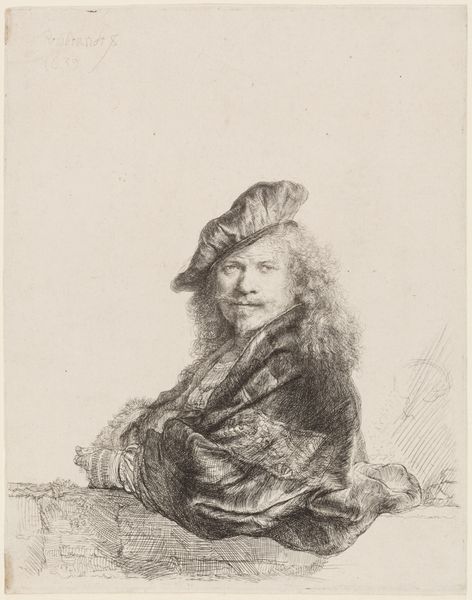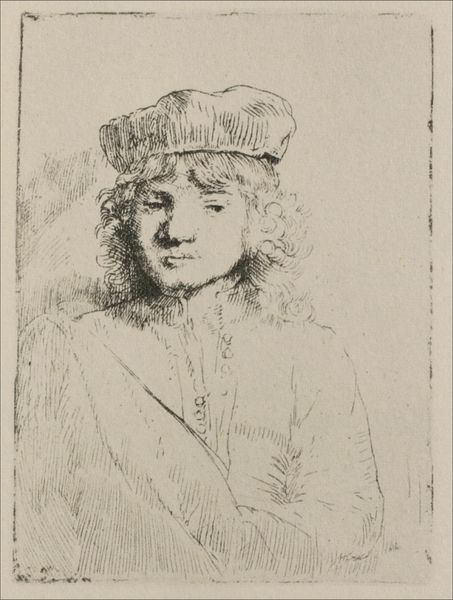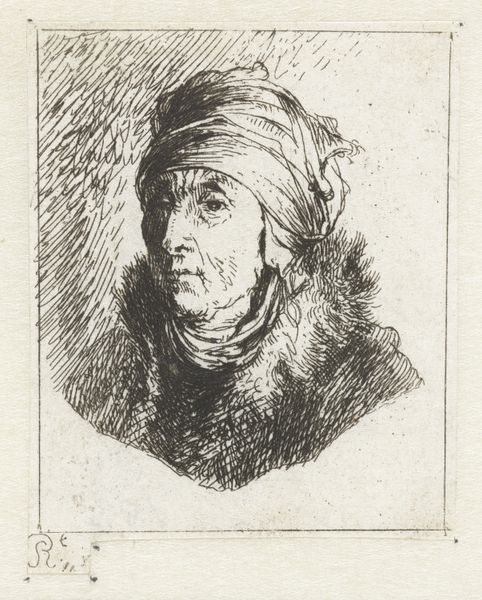
drawing, etching, ink
#
portrait
#
drawing
#
etching
#
ink
#
pencil drawing
Dimensions: height 70 mm, width 66 mm
Copyright: Rijks Museum: Open Domain
Curator: Standing before us, we have a drawing, an etching in ink actually, created by Jan Chalon sometime between 1748 and 1795. It's called "Man met hoed," or "Man with Hat." Editor: Well, the first thing that strikes me is its quiet intensity. There’s almost a hushed quality to the light and the lines, even though it’s just ink on paper. He looks rather thoughtful, maybe a bit weary, almost as if he has something important on his mind, though I find that hard to be certain of with such old pieces. Curator: I get that! The etching technique really does give it that delicate feel, doesn’t it? All those fine lines creating the shading, it’s like a whisper. He seems like he’s caught in a moment of reflection. Notice the detail on that flamboyant hat. The crosshatching really lends volume, shape, and definition. What could that tell us about the figure, if anything? Editor: The hat’s extravagance definitely speaks of a certain status. I mean, feathered hats weren’t exactly everyday wear, even then. But that looseness also implies the social conditions that permit his display of affluence. However, given the artist and the period, is it possible to discern a deliberate critique woven in? I mean, in an age marked by growing class awareness and social commentary, might it carry layers of meaning beyond mere representation? Curator: Fascinating! And the way Chalon renders his clothing... those almost scribbled lines give the impression of casual disarray. The contrast with the fancy hat could hint at inner turmoil or maybe even artistic temperament. Or perhaps, Chalon simply couldn't be bothered! Haha! I'm seeing him in my mind's eye: *"Get on with it, now—strike a pose already so I can quickly get on with it!"* Editor: I think it is essential to move past individual quirks when trying to grasp its meaning in its full sociohistorical context. Given that these portraits were more or less propaganda about identity in those eras, this artwork feels very significant because we don't usually get any raw perspectives. And here's what is so odd! This person with the hat is neither an extremely elegant nor particularly common character. If he isn't noble, he may represent another social group. And if that's the case, what kind of statement is the author trying to put out there? Curator: What an insight, it may really be a challenge against tradition—you've widened my perspective indeed. Looking at the print, I keep thinking about its sheer intimacy, the human connection that can still exist through a humble piece of paper and ink, created so long ago. It's magical! Editor: Absolutely. When considering art within our modern condition, the question isn't solely about representation but about interrogating the power dynamics that exist in shaping visual narratives, thus opening dialogues beyond that of simple representation. I think its true appeal lies precisely in its power to incite questioning, not in settling on easy answers.
Comments
No comments
Be the first to comment and join the conversation on the ultimate creative platform.
